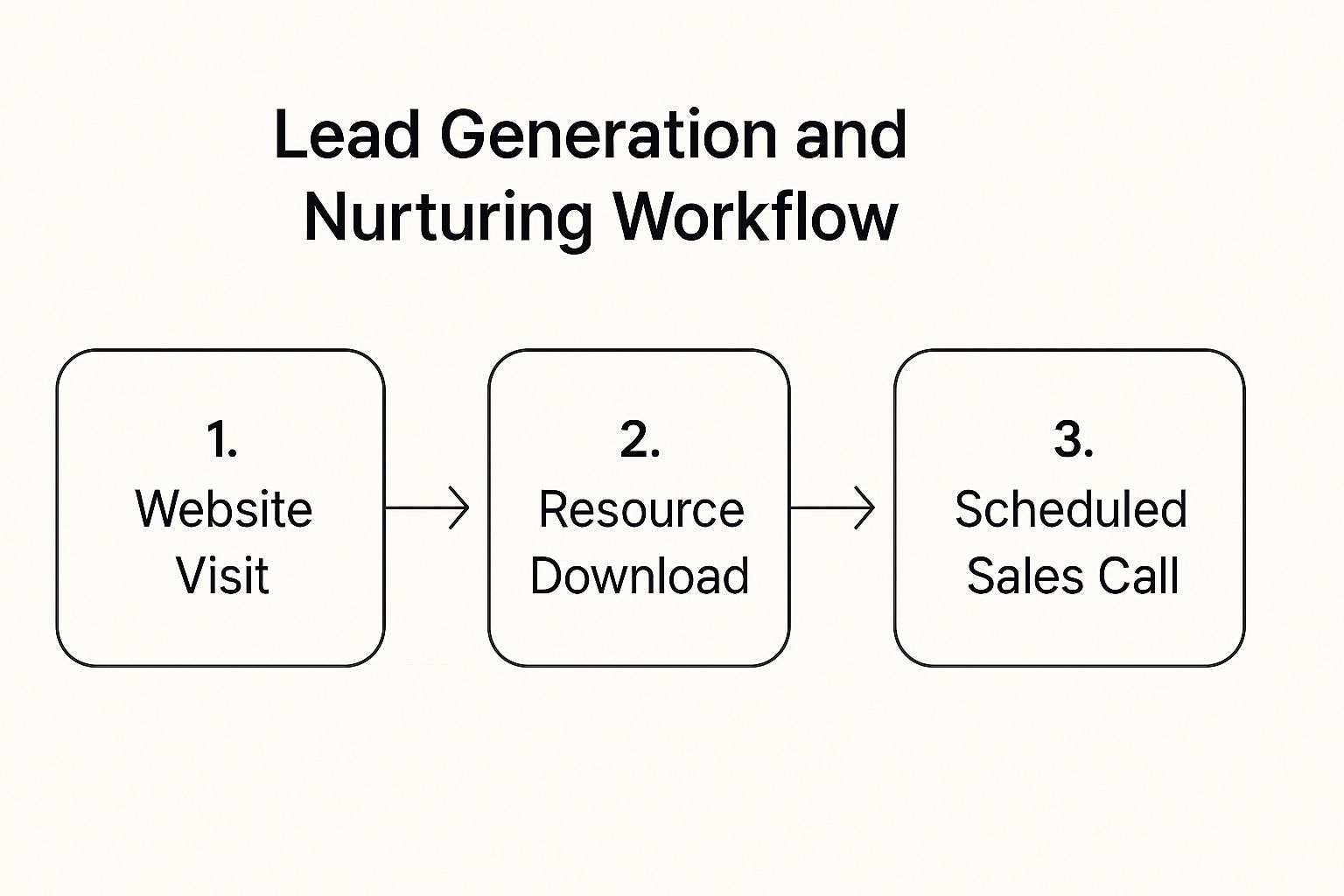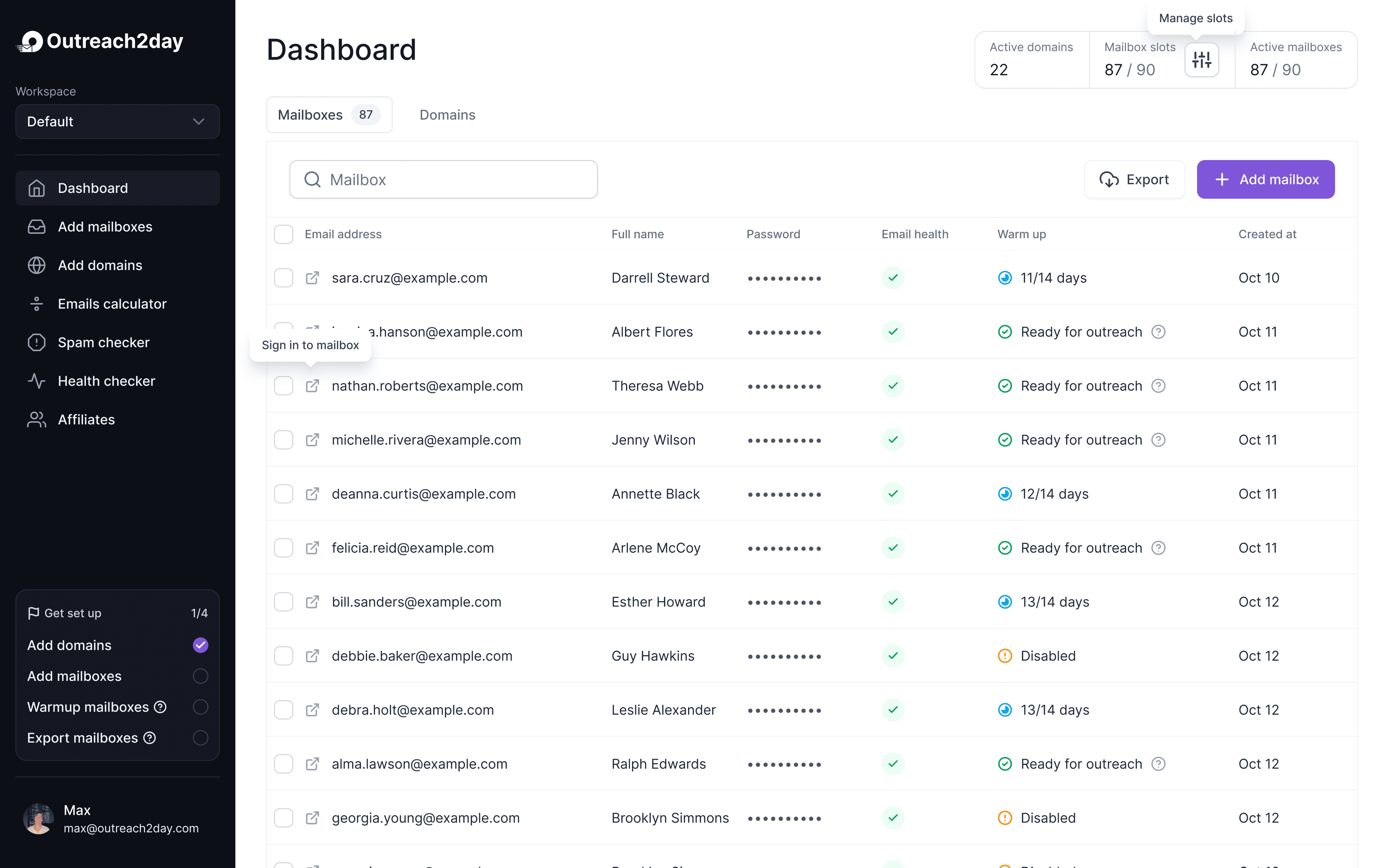Marketing Automation for Agencies | Boost Your Growth
Oct 18, 2025

Are rising operational costs affecting your client growth efforts? For marketing agencies, this is common. Shift to marketing automation to replace manual processes with efficient systems, allowing your team to focus on strategic and creative tasks that drive growth.
Why Marketing Automation Is Your Agency's Game Changer
Many agencies operate like traditional artisan shops, where growth depends on hiring more people, and each new client brings additional manual tasks. This model eventually limits profits and burdens employees with repetitive duties.
Marketing automation modernizes this process by enabling efficient, scalable systems that handle routine tasks, allowing teams to focus on strategy. Automation transforms chaotic workflows into reliable processes, ensuring consistent client experiences, automating reporting, and nurturing leads effectively.
The aim is not just efficiency but scalability, allowing agencies to expand without compromising service quality. Automation serves as a foundation for a sustainable agency model, offering tools and strategies to enhance client acquisition and retention.
Understanding the core elements of agency automation is crucial. These components function like a dedicated digital team, working continuously to support growth. The global demand for marketing automation is rising, with the market expected to reach $15.62 billion by 2030, making mastery essential for agencies.
The Workflow: Your Digital Project Manager
A workflow is the absolute backbone of your automation strategy. It's just a sequence of actions that fires off automatically when something specific happens.
Think of it as your digital project manager—one that executes a perfect client onboarding every single time without ever dropping the ball.
For example, when a new client signs on the dotted line (that’s your trigger), the workflow can instantly:
Shoot out a personalized welcome email from the account manager.
Spin up a new project in your project management tool.
Assign the initial setup tasks to the right people on your team.
Pop a kickoff meeting reminder on the calendar for one week out.
This is how you make sure no steps are ever missed. It takes a manual, error-prone process and turns it into a reliable, automated system that makes you look like a pro from day one.
Lead Scoring: Your Virtual Sales Assistant
Let's be honest: not all leads are created equal. Lead scoring is like giving your agency a virtual sales assistant whose only job is to spot the prospects most likely to sign a contract.
It’s pretty simple. The system assigns points to leads based on who they are and what they do.
A lead might get +10 points for being a SaaS company (your ideal client), another +5 points for checking out your pricing page, and a big +15 points for downloading a case study. Once a lead hits a certain score—say, 50 points—the system can automatically ping a sales rep to pick up the phone. This stops your team from wasting time on cold leads and focuses their energy on real conversations.
Key Takeaway: Lead scoring is your filter. It separates the window shoppers from the serious buyers, making your sales efforts dramatically more efficient by keying in on actual engagement.
Segmentation: Your Hyper-Personalization Expert
Segmentation involves dividing your audience into smaller, distinct groups based on shared characteristics. It helps transition from generic messaging to relevant conversations. For instance, if you have leads from e-commerce and B2B tech, you can target them with specific content: e-commerce leads receive guidance on boosting online sales, whereas B2B tech leads get strategies for generating enterprise leads. This targeted method enhances connections and results.
Strategic Benefits of Agency Automation
Incorporating marketing automation into your agency represents a shift in operations. It allows you to transition from reactive to proactive growth management for both clients and your business. The greatest advantage? Automation saves time by handling repetitive tasks, enabling your team to focus on strategic work that drives growth.
Enhanced Efficiency
Consider the hours spent each month on tasks requiring precision but no creativity, like pulling reports or scheduling posts. Marketing automation acts as a 24/7 assistant, executing these tasks flawlessly. Data shows that 45% of companies save significant time on admin tasks with automation.
Time savings lead to:
Faster Turnarounds: Reports and updates are timely and consistent.
Fewer Errors: Automated systems ensure accuracy and professionalism.
Strategic Focus: Freed from data entry, account managers can better serve clients with strategic insights.
Improved Lead Nurturing
Manual lead nurturing can result in missed opportunities. Automation maintains a personalized conversation, guiding prospects from initial contact to a booked demo. This ensures leads are engaged, informed, and ready for business discussions, enhancing the effectiveness of B2B lead generation.
Consistent and Scalable Service
As your agency grows, maintaining quality service becomes challenging. Automation enables scalable service delivery without proportional headcount increases. By standardizing workflows for onboarding, check-ins, and reports, you ensure every client receives a professional experience, even during busy periods. This supports client growth without escalating operational costs.
Strengthen Trust with Data-Driven Insights
One significant yet often overlooked benefit is the capacity to validate your impact with concrete data. Automation platforms provide extensive tracking of clicks, opens, and conversions, offering indisputable evidence of your achievements.
Rather than vague discussions about engagement, you can present clear metrics to clients, illustrating lead progression, conversion rates, and ROI. This transparency fosters trust and solidifies your agency as a strategic partner, transforming subjective conversations into objective planning sessions.
Essential Automated Workflows for Agencies
While theoretical understanding is important, implementing marketing automation is where agencies truly excel. Moving beyond concepts, let's explore practical workflows designed to address common operational challenges.
Each workflow acts as a pre-configured system with specific objectives. Instead of manually managing leads or onboarding clients, you can set up automated processes that ensure consistent execution, enhancing client experience from the start.
Here are four crucial automated workflows every agency should implement, each addressing key client lifecycle stages from initial interest to sustained growth.
Lead Generation and Nurturing Workflow
This process transforms casual visitors into qualified leads by capturing interest and gradually building relationships. Operating in the background, it ensures your sales team engages only with warm prospects.
Here's the process:
Trigger: A visitor downloads valuable content from your website, becoming a new lead upon form submission.
Immediate Follow-Up: An automated thank-you email with the requested resource is promptly sent, establishing a professional tone.
Nurture Sequence: A series of pre-written emails provide value over time, addressing pain points and positioning your agency as an expert without hard selling.
Lead Scoring: Interactions with emails and key site pages add points, with higher scores indicating greater engagement.
Handoff: Once a lead reaches a certain score, a sales rep is notified to follow up. By this stage, leads are informed, engaged, and ready for discussion.
This workflow efficiently guides the journey from initial contact to a scheduled call.

As you can see, automation is what weaves all these separate touchpoints into a seamless journey for the prospect. To really nail this, you can pull from a bunch of powerful B2B lead nurturing strategies and build them right into this workflow.
The Client Onboarding and Welcome Sequence
First impressions are crucial, and a cumbersome onboarding process can immediately sow doubt in a new client relationship. An automated workflow ensures every client receives a professional and consistent experience, setting the stage for long-term success. This process not only saves time but also upholds your agency's commitment to excellence, ensuring no steps are missed and every client feels valued.
A typical sequence might include:
Trigger: A deal is marked "Closed-Won" in the CRM.
Action 1: The account manager sends a welcome email with next steps and a welcome packet link.
Action 2: Notifications are sent to finance for billing and to the project management team to set up the client’s project.
Action 3: An email is sent to schedule the kickoff call.
Action 4: A series of emails introduces key team members and resources over two weeks.
Automated Client Reporting Workflow
Manual monthly reporting is time-consuming for account managers. Automation frees them to focus on data analysis and strategic insights. By integrating reporting tools with your automation platform, reports can be generated and emailed to clients automatically on the first business day of each month.
Client Upsell and Cross-sell Workflow
Existing clients can be a significant source of new revenue. This workflow identifies growth opportunities by analyzing client data and behavior, triggering targeted campaigns at optimal times.
For instance, reaching performance milestones might prompt an account manager to discuss service expansion. Alternatively, frequent visits to a service page could trigger an email campaign with relevant case studies.
Selecting the Right Marketing Automation Platform
Choosing a marketing automation platform is like hiring a key employee. The right platform should integrate seamlessly with your current systems and have the capacity to grow with your agency.
Key Considerations
Integration: Ensure the platform connects with your CRM, project management software, and any specialized tools used by clients.
Scalability: The platform should accommodate growth in contacts or new client accounts without excessive cost increases.
Agency-Specific Features: Look for multi-client management, white-labeling capabilities, and customizable user permissions.
The market for automation tools is expanding, with small and medium-sized businesses rapidly adopting flexible SaaS models. When evaluating platforms, compare essential features to find the right fit for your agency’s needs and budget.
Core Feature Comparison for Agency Automation Tools
Feature | Importance for Agencies | What to Look For |
|---|---|---|
Multi-Client Management | Critical. The foundation of an agency-friendly platform. | A centralized dashboard to switch between client accounts easily, with completely segregated data, assets, and user permissions. |
White-Labeling | High. Essential for branding and client experience. | The ability to add your agency's logo and custom domains to client-facing reports, dashboards, and login portals. |
User Roles & Permissions | High. Key for security and controlled client access. | Granular controls to define what team members and clients can see or edit. Look for "client" or "guest" user roles. |
CRM Integration | Critical. Your sales and marketing data must be in sync. | Deep, native integration with major CRMs (like Salesforce, HubSpot) that supports two-way data sync for contacts, leads, and deals. |
Reporting & Analytics | High. Proving ROI is your job. | Customizable dashboards and template-based reporting that you can schedule and automate. Look for ROI and attribution reporting. |
Scalability | Medium to High. You need a platform that grows with you. | Tiered pricing based on contacts or clients. Ensure the cost of scaling up is predictable and won't cripple your margins. |
API Access | Medium. Depends on your technical needs. | A well-documented and robust API for building custom integrations or connecting to non-standard client tools. |
Ultimately, this table isn't just a checklist. It's a framework to help you focus on the features that directly impact your agency's efficiency, professionalism, and ability to deliver killer results for your clients.
Getting Automation Right in Your Agency
Adopting marketing automation requires a strategic, phased approach rather than an all-encompassing implementation. Agencies that excel in this area introduce automation gradually, allowing their teams to adapt without overwhelm, leading to immediate successes and building momentum.
A common error is attempting to automate every process from the outset, resulting in confusion and inefficiency. Instead, focus on establishing a solid foundation with one efficient workflow at a time.
Start Small for Significant Gains
Identify a high-impact, time-consuming process as your pilot project. Prioritize repetitive tasks with clear rules and tangible benefits. Consider starting with:
Monthly Client Reporting: Automating this can save hours of manual effort monthly.
New Lead Welcome Sequence: A straightforward email series ensures timely engagement with new contacts.
Internal Notifications: Alerts for closed deals or project milestones keep everyone informed and motivated.
By executing a quick win, you demonstrate the effectiveness of automation, building confidence and advocacy within your team.
Engage and Train Your Team
Emphasize that automation enhances staff capabilities rather than replacing them. Explain its purpose and provide tailored training to ensure comfort with the tools, which promotes usage.
Avoid Common Pitfalls
Beware of these potential missteps that can jeopardize ROI and client relationships:
Automating Inappropriate Conversations: Maintain personal interaction for relationship-building discussions.
Creating Workflows Without Purpose: Ensure every automation has a clear objective.
Neglecting Personalization: Use personalization tokens and make automated communications feel personal.
Remember, automation requires ongoing testing and adjustments to fully realize its value.
Got Questions? We've Got Answers.
Jumping into marketing automation for your agency can feel like opening a can of worms. Let's tackle some of the most common questions that pop up so you can move forward without the guesswork.
Is This Going to Replace My Team?
Marketing automation is not a replacement for your team but a support tool that handles repetitive tasks like follow-up emails, CRM updates, and reports. This allows your team to focus on client relationships, strategy, and closing deals.
Cost Considerations
Pricing varies based on agency size and needs:
Starter Pack: $50-$150/month for basic tools.
Growth Engine: $300-$800/month for advanced features.
Enterprise: Thousands per month for extensive analytics and customization.
Focus on ROI rather than price. If automation saves time and acquires clients, it's an investment.
Expected Results
Quick gains are possible within the first week with simple setups. More complex systems, like lead scoring, may take three to six months for significant results.
Setup your outreach in
3 minutes. Literally.
Add or transfer domains from other platforms, set up mailboxes, and initiate warming or export processes

